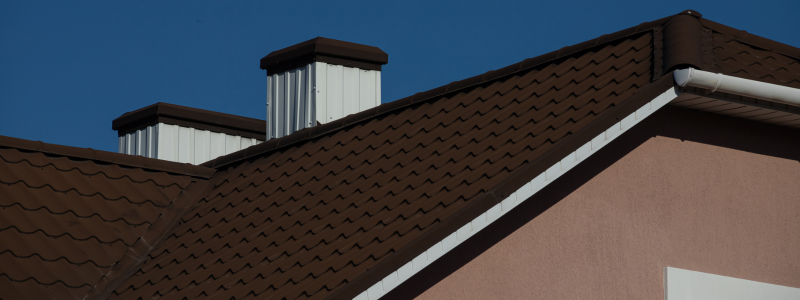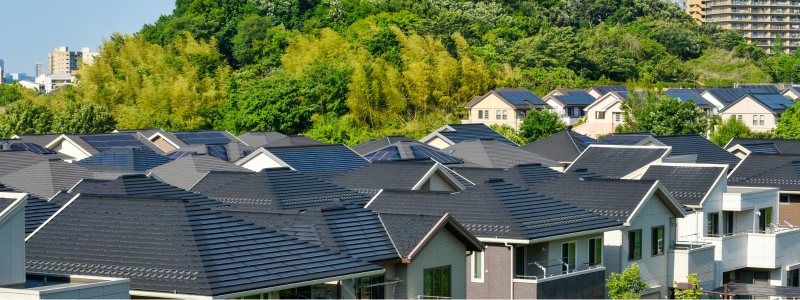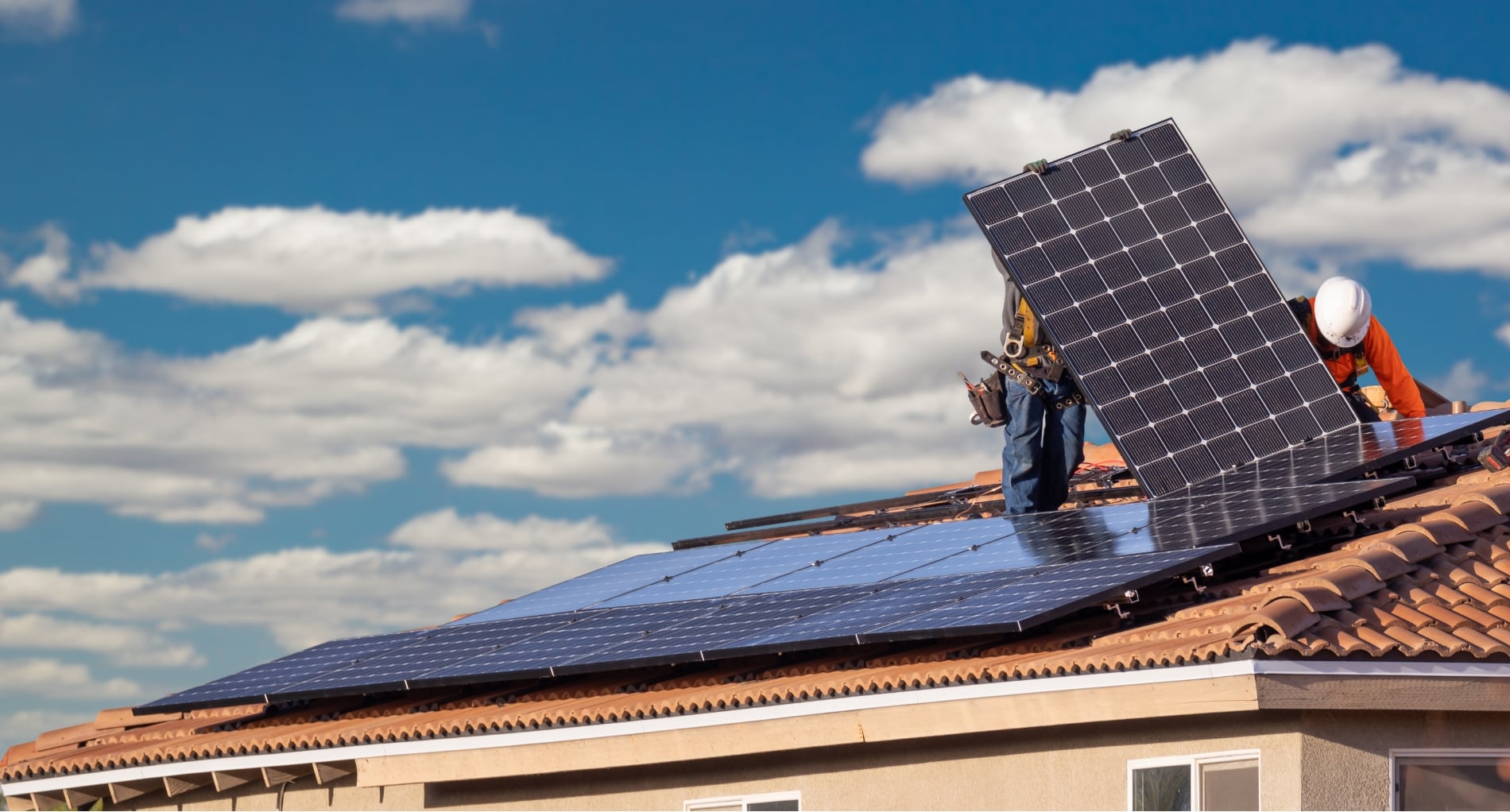Solar panels offer an alternative to conventional methods of powering residential homes, providing a compelling option for those considering a transition to eco-friendly and cost-effective energy solutions.
It’s widely recognized that solar panels need to be installed on rooftops to harness sunlight. However, not all roofs are created equal; some are better suited for solar panel installations than others.
In this blog, we will explore the following questions about solar panels and roof types:
- Can solar panels be installed on any type of roof?
- What is the best roof type for solar?
- What are the 3 types of solar panels?
- Can I mix solar panel types?
- Why don’t solar panels work on every roof?
- How do I know if I can put solar panels on my roof?
Can Solar Panels Be Installed on Any Type of Roof?

For the most part, solar panels can be installed on all roof types unless the roof has too steep an angle or a pitch of over 40 degrees. Solar panels may be installed on a flat roof but require additional mounting systems during installation. If your house doesn’t meet these qualifications, you can still have a solar system and place it in an alternative spot. For example, solar panels can be installed on the roofs of barns, sheds, detached garages, and carports.
You’ll want to consider the amount of space and sun exposure solar panels will have on the roof. Smaller systems with less direct sunlight impact the amount of solar energy absorbed and whether it outweighs your household’s energy consumption. That said, most roofs can accommodate solar panels, but you’ll want to consult with a solar technician to see whether you’ll generate more than you consume, allowing you to see a return on investment.
What is the Best Roof Type for Solar?
Solar installers will recommend asphalt, tile, tar, gravel, and metal roofs. These roofing materials are considered the sturdiest and most capable of supporting the weight of a solar panel system. Likewise, roofs that face south have a pitch at a 30 to 45-degree angle, and at least 200 to 500 square feet of space will absorb the most sunlight.
While angle estimates generally stay the same across all types of roofs, the amount of space you’ll need varies based on the size of your home and the amount of power that needs to be generated to offset your electricity bill.
What are the 3 Types of Solar Panels?
| Panels | Efficiency | Cost | Material | Lifespan | CO2-eq/kWh |
|---|---|---|---|---|---|
| Monocrystalline | 15-20% | Moderate | Pure silicon | Long | 38.1 g CO2-eq/kWh |
| Polycrystalline | 13-16% | Low | Melted silicon crystals | Moderate | 27.2 g CO2-eq/kWh |
| Thin-Film | 7-10% | High | Combination of materials | Short | 21.4 g CO2-eq/kWh |
Monocrystalline Silicon Solar Panels (Mono-SI)
Monocrystalline solar panels possess a sleek, dark appearance with consistent patterns and smooth edges. Their exceptional efficiency is owed to the purity of the silicon material utilized in their construction. Due to these numerous advantages, monocrystalline panels are more expensive than other types.
The space-saving design of these panels makes them ideal for roofs with limited surface area. Additionally, monocrystalline panels exhibit greater durability and resilience to high temperatures when compared to polycrystalline and thin-film solar panels.
Polycrystalline Solar Panels (P-Si)
Polycrystalline solar panels showcase a speckled, blue, square-patterned appearance. They offer a more economical alternative to monocrystalline panels as they are manufactured using melted, raw silicon, a cost-effective and efficient production process.
Though slightly less durable than monocrystalline panels, hot temperatures do not significantly affect their lifespan. While monocrystalline panels may boast slightly higher efficiency, the distinction is insignificant. Ultimately, the choice between the two types comes down to personal preferences, budget constraints, and specific roofing requirements.
Thin-Film: Amorphous Silicon Solar Panels (A-SI)
Among the three types, thin-film solar panels offer the most budget-friendly option. These panels are produced by depositing one or more thin layers of photovoltaic material onto a substrate. Their advantage lies in the ease of production and their ability to withstand high temperatures.
However, using thin-film panels for residential solar systems may pose challenges as they occupy a considerable amount of space. Additionally, their lifespan is relatively shorter compared to monocrystalline and polycrystalline panels.
Can I Mix Solar Panel Types?

While possible, it’s not advised to mix solar panel types. Solar panels vary in voltage and amp output, and combining multiple types can lead to system errors that impact efficiency.
Being consistent with your solar panels across the system provides the best return on your investment. Likewise, always work with an expert technician in the field to ensure everything is installed correctly and adheres to safety regulations.
Why Don’t Solar Panels Work on Every Roof?
Solar panels rely on their exposure to the sun to convert to energy. If a roof doesn’t provide enough direct sunlight, there won’t be enough generated power to outweigh your household’s electrical usage.
- Sun exposure. Roofs that don’t have a south-facing side or are obstructed by unmovable shade (e.g., a large tree, neighboring house, etc.) will likely not deliver the level of efficiency that makes them worth it.
- Angle. Similarly, a roof should have at least a 30-degree angle. Otherwise, they won’t be perpendicular to the sun, which is essential for optimal function. Likewise, an angle allows water from rain to run off panels which can also aid in washing away accumulated dirt and dust.
How Do I Know if I Can Put Solar Panels on My Roof?
Schedule a consultation with a solar panel installer to have your roof inspected. They’ll look at its condition and whether it’s durable enough for solar panels. They can also inform you if there are any needed repairs prior to installation.
Solar panels require a sturdy roof that has adequate space and angle direction to profit off the sun’s rays. Aside from the overall state of your roof, they’ll take into account the space and angles of your roof, the material, and whether the cost of installing solar panels on your roof will bring in a return on future savings.
Our World Energy For Reliable, Cost-Effective Electricity
Discover how Our World Energy provides affordable solar power solutions that grant you energy independence from your utility company. Embrace renewable energy that genuinely works, empowering you to take charge of your energy needs.
Reach out to us today to learn about our services and how we can cater to your energy goals.


